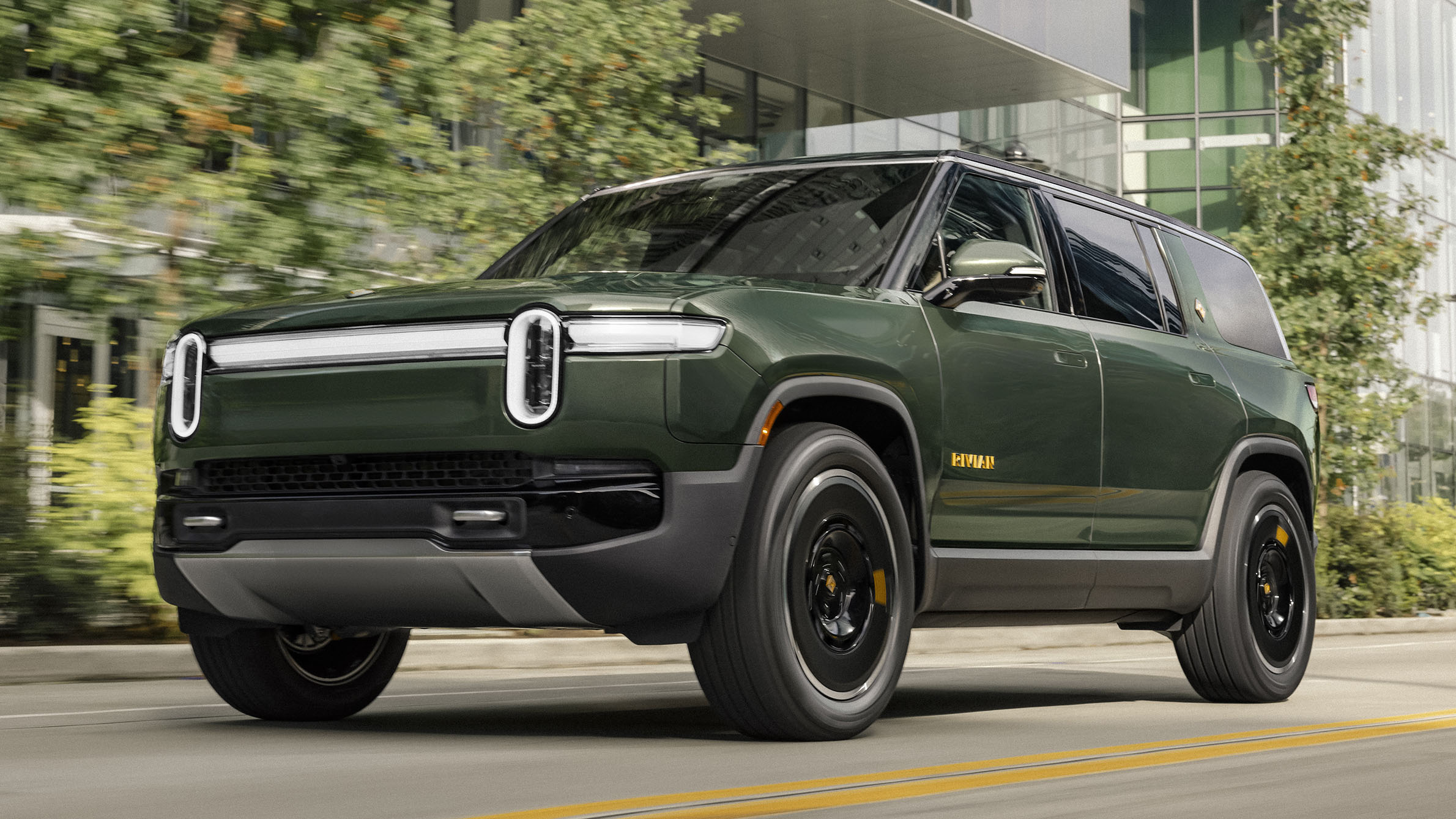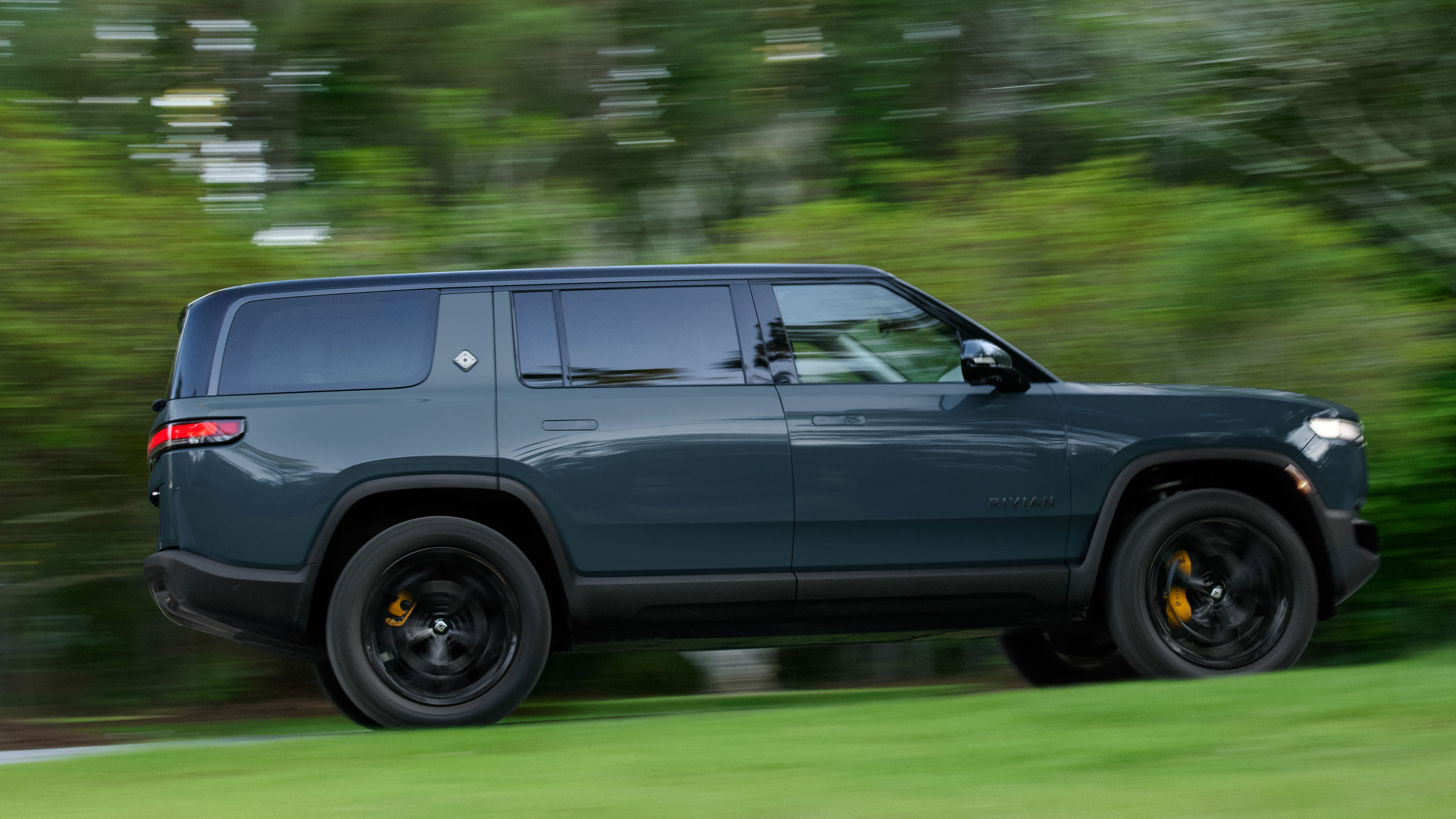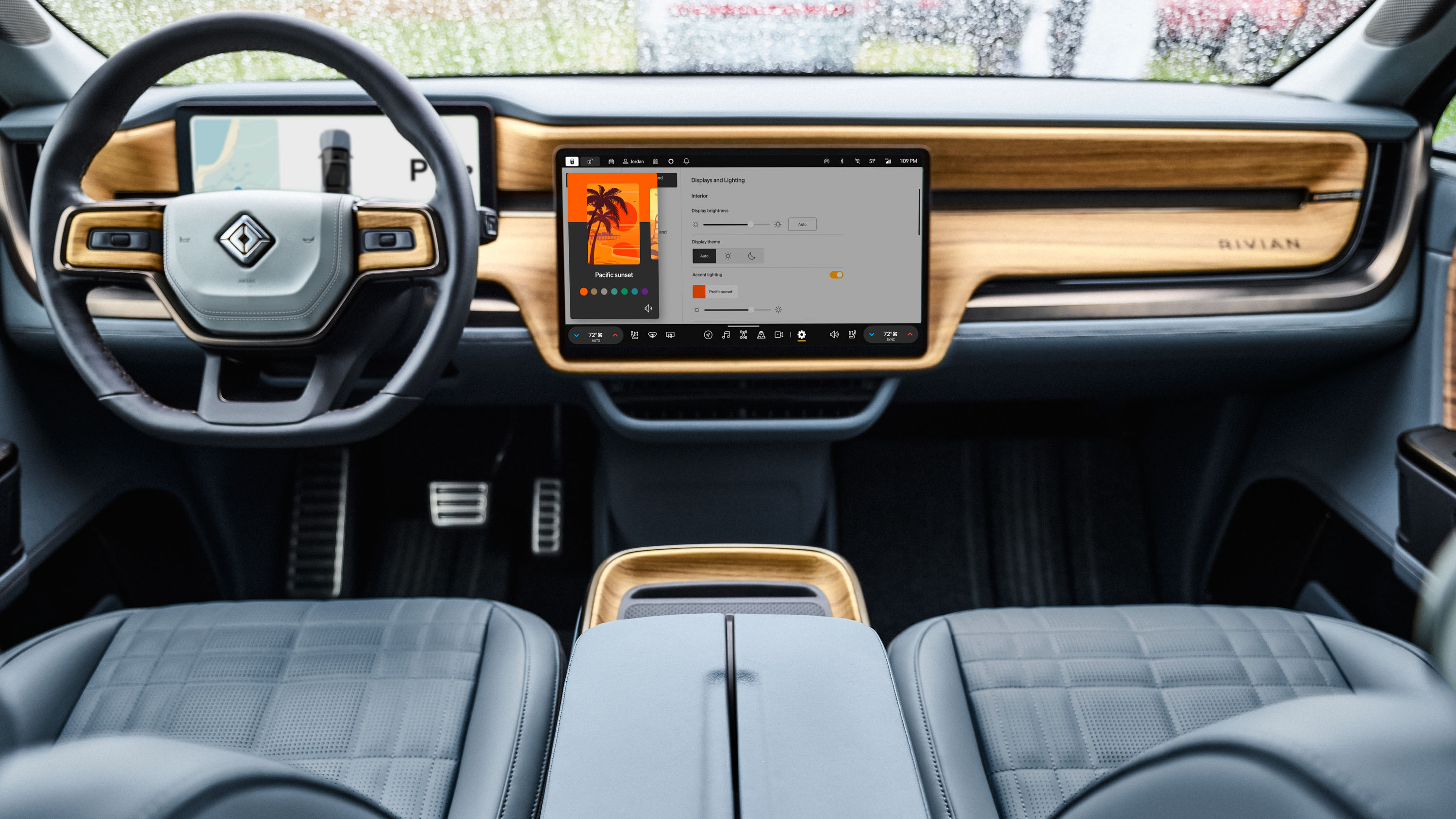
Rivian R1S (US) review
Driving
What is it like to drive?
One of the first things that passengers familiar with the pre-update R1S will notice is a substantial improvement in ride quality. Based on customer feedback, the suspension system has been reengineered to make commuting more tolerable without any dings to its off-road abilities. There’s also less wind noise permeating throughout the cabin.
There are a number of ways drivers can customize their experience, either through drive modes or by way of individual settings. For instance, ride height can automatically adjust based on speeds for extra stability or it can be manually adjusted, and it can also change depending on drive mode.
Those wishing for even more customization will love the RAD Tuner, a function (currently) exclusive to the Quad-motor R1S and R1T. Developed by the Rivian Adventure Department, the feature fully unlocks a shocking amount of access to a number of car settings beyond the presets we’ve become accustomed to.
Here, drivers can – on the fly – change the torque balance, wheel slip limits, regen levels, and much, much more. In short, you can digitally ‘tune’ your Rivian like an old-school gearhead would in their garage. There are still presets like ‘Sport’ available to get the R1S ready for dynamic driving, but you can use it as the baseline for your own custom settings if you don’t feel like building your own from scratch.
Speaking of, in this mode, the Rivian’s suspension tightens up and the pedal response is heightened, letting drivers put that 550-1,025hp to work. Though the R1S tops out at 130mph, you’ll get there quick.
How about off the road?
When in the muck, the R1S is again doing all of the heavy lifting. There are different modes for different terrains but either way, it’s the Rivian software sorting things out. Apart from the quiet ride, the benefit of taking an EV off road is using the regen at its fullest for easy one-pedal traversal over tricky terrain.
Also, for a big battery with wheels, the Rivian is quite water resistant, able to wade through a full meter of river water. At the end of the day, the R1S is going to tackle the majority of off-road trials that customers will throw at it. If that’s not specific enough, know that Rivian engineers Lilly Macaruso and Alex Anderson have previously competed in and won the Rebelle Rally, the longest off-road challenge in the US, in a stock R1T, the pickup sibling vehicle to the R1S.
A new feature we bet they wish they had at the time is kick-turn, another Quad-exclusive tool that rotates the car along its vertical axis thanks to its ability to drive all four wheels independently. You’ve seen this party trick in other EVs like the electric G-Wagen, but with the Rivian, kick-turn is meant to be more useful, if at least more earth-friendly. While either stationary or at low speeds, a driver using kick turn can rotate their Rivian to get around or out of tight spots, reducing the need to make multi-point turns or back out haphazardly from a pinch-point.
The R1S has some other, more aggressive ways to play in the dirt, too. Provided you’re in a tri-motor or above, you have access to a rally and drift mode for next-level off-road horsing around. According to Macaruso, both systems were engineered with the feedback from pros, and the Rivian team dialed in the settings to their satisfaction, something you can now do too with the RAD Tuner, incidentally.
The result is a rally mode that sends the R1S flying sideways to the driver’s aplomb. It's still a hefty car, but the software is both flattering and forgiving, making you feel like a pro without too hard of a limit. If this is what we can expect from the upcoming R3X, we’ll be over the moon.
Same goes for the drift mode. Where the Rally mode is a gentle guide, drift is as close to switching all traction and stability controls off without doing so. They’ll kick in, but they’ll give you enough bungee cord to flirt with the bottom of the ravine first. It also delivers gobs of power instantly to the rear wheels, requiring a supremely practiced and light foot to control it all. If you don’t, you at least have a wild time.
What can I expect for range?
Depending on configuration, the R1S can net drivers between 258 to 420 road miles to blaze. The new lithium iron phosphate standard pack gives the dual motor setup 270 miles of estimated range while the “Large” and “Max” batteries increase this exponentially. For the power hungry setups, expect less, though still a substantial amount. The tri-motor, for example, can provide 380 miles of range ostensibly without stretching things. Set in conserve mode, it can probably get 400 miles.
Filling these batteries back up from 10 per cent to 80 per cent can take between 30 to 40 minutes on a DC fast charger, depending on the battery. The Rivian is also NACS compatible now, by the way. The initial run of gen-2 vehicles needed to rely on an adaptor, but all the newer ones feature an integrated NACS port.
Featured

Trending this week
- Car Review
BMW iX3






